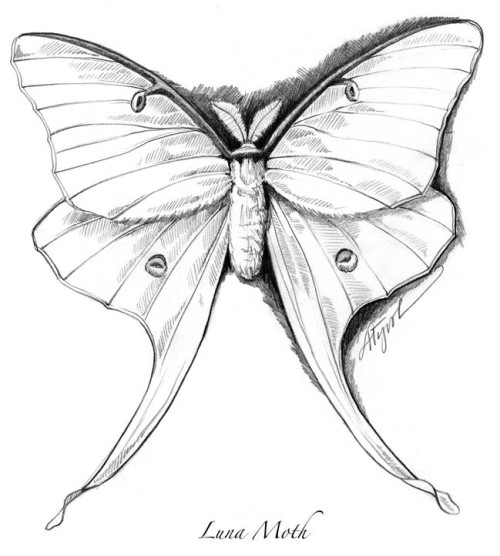
Many years ago, a friend and fellow naturalist encouraged me to raise cecropia moths as a way of increasing the local population, which had become scarce around my home in southern Connecticut. The decline of the cecropia moth – one of the largest of our native giant silk moths – was linked, ironically, to biological controls that humans were using to kill gypsy moths, exotic moths that were introduced to the U.S. by commercial silk producers. One June afternoon, my friend showed up with a small twig from a black cherry tree. On the underside of one of the leaves were 12 tiny eggs, which, about a week later, hatched into small, black fuzzy caterpillars, no bigger than a grain of rice. My job was to keep them supplied with fresh black cherry leaves.
Within a few weeks, the caterpillars (eating and pooping machines, really) were now green with yellow and blue knobs, and – having grown exponentially – were about the size of my index finger. I marveled at their consumption rate, as the cherry leaves needed replenishing two or three times a day now, even though only four or five caterpillars remained. Finally, with only the three largest caterpillars surviving, they pupated into robust, fuzzy cocoons, prompting me to wonder if Darwin had it slightly wrong: survival of the fattest might have been more accurate.
There are about 20 species of giant silk moths in North America, but only four species occur in Vermont and New Hampshire. As adults, these are impressive moths indeed. Not only are they enormous – cecropia and polyphemus moths can be as large as your hand – they are also beautiful to look at, with intricate patterns, rich colors, and striking eyespots. Perhaps the best-known Saturniinae is the dramatic, lime-green luna moth, with its purple-edged wings, four transparent eyespots, and long curving tails, reminiscent of a barn swallow.
After overwintering in their silken cocoons, adult silk moths typically emerge in June or July. So, beginning in late-May, I checked my three pupae each morning for signs of metamorphosis. Finally, one morning I was rewarded with two fresh moths (both females), their pristine wings completely engorged and dry, while the third (a male) was just beginning to “pump up” its wings. For a cecropia moth “farmer,” this is when the fun begins.
If giant silk moth caterpillars are eating and pooping machines, adults are breeding machines. Having only rudimentary mouth parts, they don’t feed at all during their short lives, but instead devote all their energy toward locating a mate and reproducing (with only a week or so to live, there’s no time to waste). So that evening, I took the newly emerged female moths (identified by their small antennae), placed them in a crudely-made wire mesh cage about the size of a microwave oven, and hung it from a cherry tree as a lure. I was fishing for wild cecropias. Meanwhile, the male (identified by his large, feathery antenna) would have to wait before being released.
After emergence, female giant silk moths remain physically inactive, conserving their limited fat reserves while minimizing exposure to predators. Nevertheless, they communicate chemically with males, letting them know where they are. Using a gland on the tip of their abdomen, females release a plume of pheromones into the evening air. This “perfume” is detected by the males’ highly branched, feathery antennae which contain tiny, hair-like structures called sensilla. Receptor cells on the sensilla bind with the pheromone molecules, stimulating the males to relentlessly follow the scent trail. Although the distance from which males can detect the pheromone is still unknown, marked individuals have been recovered up to 20 miles away in just a few days.
After just one night of hanging in the cherry tree, I was surprised to find a male cecropia on the outside of the cage the following morning. His wings were pale and tattered, evidence of his efforts to locate a female, with which he was now abdomen-to-abdomen through the wire mesh. Another tattered male was present the following day after I had released the captive male (so he could join the breeding population that was evidently in the area). The two captive females laid dozens of eggs each, only to die shortly thereafter, having accomplished their sole purpose in life.
I continued to raise cecropia moths for a couple years, releasing maybe a dozen individuals to the surrounding area. Whether or not I was actually helping out the local population was unclear, but since my female “lures” never had any trouble attracting wild male moths, I eventually decided that, in the grand scheme of things, I was probably having very little impact. Despite my good intentions, it appeared that survival of the fittest (or fattest) was working quite well without my help.


Discussion *